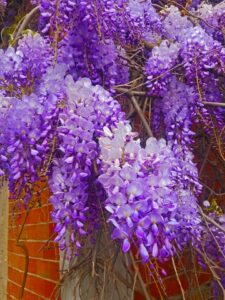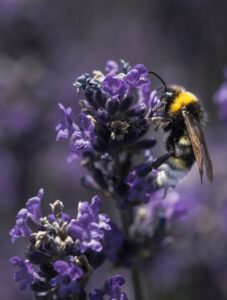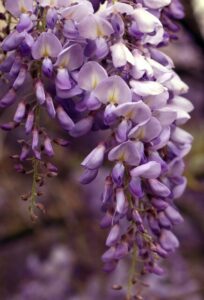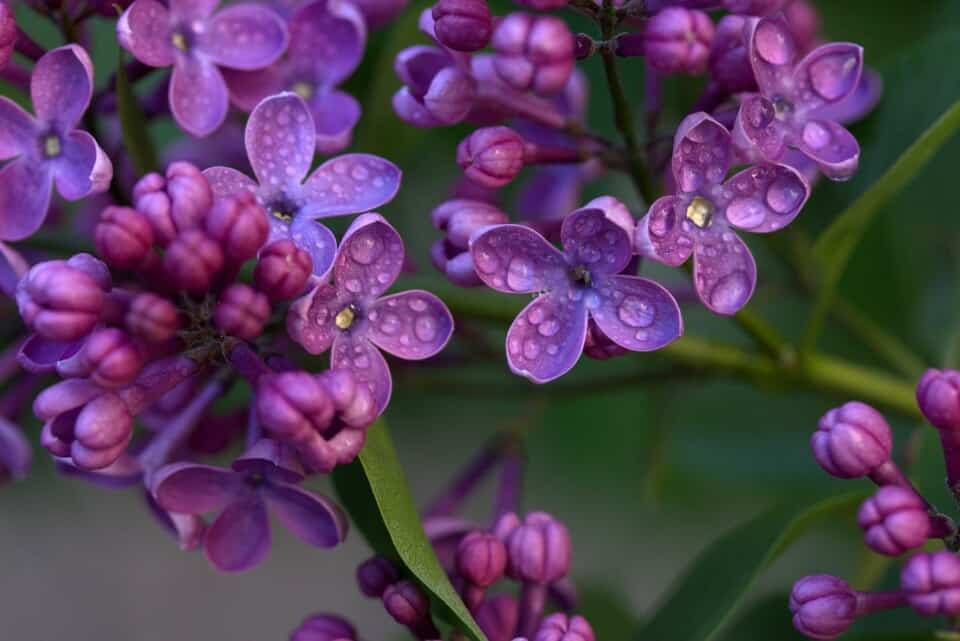Some links in the post are affiliate links and I get a commission from purchases made through some links found in the post.
They’ve both got beautiful flowers, are hardy, and friendly to beginners. So, how can one choose between the lilac and the wisteria?
I find that it’s often easier to make such tough decisions when you have all the facts. Then you can weigh the differences and the similarities and decide what makes the most sense for your garden.
Who knows? You may fall in love with all the options and use them in your landscaping. Or one could capture your heart.
Whichever path you take, I am here to break down what you can expect of these plants. Let’s get to it:
Wisteria Vs. Lilac – What Are the Similarities?
Are you curious about what makes these plants similar? Wonder no more. Below are the facts:
a) They Love Sun Exposure
 Both lilacs and wisterias enjoy being in the full sun, also known as bright and direct light. That’s the light directly from the sun without any obstruction.
Both lilacs and wisterias enjoy being in the full sun, also known as bright and direct light. That’s the light directly from the sun without any obstruction.
You can achieve this light by positioning these plants towards the east, west, or south of the garden, ensuring that they do not have any objects shading them from the light.
The lilac grows bushy and tall in the full sun. For this plant to photosynthesize and make enough food to support its blooms, it must be in this light exposure for at least six hours a day.
It can also grow well in bright and indirect light such as that in the east or west of the garden.
However, this light limits its blooming capability and can result in fewer flowers. When kept in the shade, the lilac does not bloom well or at all.
The case is not different with the wisteria. All wisteria varieties do best in the sunshine. You can still grow them in partial shade, but this comes with the risk of reduced blooms.
You may also like: The common problems with a wisteria & how to fix them
b) They Love Growing in Neutral and Well-Draining Soils
Soil pH can make or break a plant. And when it comes to wisterias and lilacs, it’s always best to stay on the fence and not sway too much on either side.
What does the lilac enjoy? A pH of 7 would be ideal. Moreover, the soil should be rich and loamy with good drainage.
Loamy soils comprise clay, sand, and silt, creating a medium-sized texture that allows enough water to drain while enabling the soil to hold on to enough water.
This kind of soil also ensures that the plant’s roots have adequate access to air, as opposed to compacted soil which deprives the plant of oxygen.
It’s important to note that lilacs can withstand clay to a given extent. But this prolonged exposure to waterlogged soil can affect its growth and thus its flowering.
As for the wisteria, you have the option of neutral or slightly acidic soils (pH of 6 to 7). Anything alkaline makes the wisteria chlorotic such that its leaves do not produce enough chlorophyll.
Eventually, the plant starts turning yellow and cannot produce enough food to maintain its growth and blooms. The soil should also be well-draining and rich.
So, like with the lilac, you can choose loamy soils. Please note that these plants are averse to transplanting, and it’s always best to position them in a spot where they can thrive.
Moving them interrupts their juvenile stages and can increase the time you must wait before the plants bloom.
c) They Are Prone to Root Rot
Lilacs do not like sitting in soggy soil. The more you leave them in such conditions, the less air their roots can access, which hampers their ability to absorb oxygen and nutrients.
Moreover, such conditions are favorable to the growth of harmful fungi that attack the lilacs, killing them from the roots.
Over time, the plant starts wilting, showing yellowing, and could even die. Most gardeners know that root rot is a silent killer, and by the time you catch it, the plant may be long gone.
To avoid this outcome, it’s best to give the lilacs moderate moisture by only watering them when the soil feels dry to the touch.
Additionally, you should ensure the soil is well-draining. As the plants mature, you can stop watering them and allow them to survive on rainfall. Mature plants will only need supplemental watering when the heat is too much.
Wisterias are also similar when it comes to their watering needs. Seeing as these plants grow in wet regions, it’s easy to assume that they can put up with excess watering.
But that is not the case. They prefer moist but not damp conditions. Else, they develop root rot, and the plant starts dying.
Given that wisterias are not keen on being transplanted, it’s best to avoid such damage by only watering the plants when necessary.
And this is only when the top two inches of the soil dry out. Unlike lilacs, mature wisterias still need watering and will require an inch of rainfall each week during active growing seasons.
And when it gets too hot, like in the summer, you may need to increase the watering to ensure the plant does not get dehydrated.
You may also like: 6 great benefits of owning a wisteria
d) They Prefer Cool Climates
While lilacs and wisterias love growing in the full sun, they do not enjoy harsh temperatures like those in the higher USDA zones.
Lilacs, native to Europe, grow in USDA zones 3 to 7, where the summers are relatively cool. Wisterias are the same, doing best in USDA zones 5 through 9.
What happens when you grow these plants in the hotter regions? Outside the recommended USDA zones, the temperatures are high enough to encourage the growth of fungi.

And lilacs and wisterias are susceptible to such diseases, which can weaken and kill them. So, to keep such attacks at bay, it’s best to stick to the cooler zones.
How low can the temperatures get? The good news is that in the recommended zones, you do not need to move your plant indoors in the winter.
These plants are well adjusted to the cold winters and can even do well in temperatures below freezing. However, there is a caveat to this acclimation.
Wisterias and lilacs develop their buds around winter. And if these get exposed to late frosts, they can get damaged, which would affect the blooming of the plants.
Thus, if your area is prone to such temperatures, it’s best to cover the plant with a cloth to protect its buds. Then, when the late frost has passed, you can remove the cloth and enjoy the blooms.
e) They Are Flowering Plants
The most appealing thing about lilacs and wisterias is their flowering capability. Lilacs, which belong to the olive family, bloom in the spring, giving rise to flowers with purple or white hues.
These flowers measure a third of an inch wide and come arranged in clusters. They contrast nicely against the plant’s leaves which can be a bluish or grayish-green that remains intact even in the fall.
The blooms on lilacs typically last a few weeks. But the good thing is that they come back each year.
However, blooming is not always a guarantee as it comes down to how much care you give to your plant. To enjoy flourishing blooms year in and out, you should:
- Ensure the plant gets exposure to full sun for at least 6 hours a day in the spring and summer,
- Occasionally prune the plant to encourage more growth and blooming: You should focus on removing the old branches that have already flowered,
- Keep the soil moist to ensure that the plant can photosynthesize and make adequate food for the blooms, and
- Mulch the plant to help it retain more moisture and keep weeds at bay.
Wisterias are also flowering plants that give rise to blue, purple, and white blooms in the spring and summer.
Pruning the plant often encourages it to flower more and can help you extend the blooming time into the summer.
However, this only applies to American wisteria. Gardeners growing the Chinese wisteria enjoy blooms once in the spring. Thus, if you want to enjoy a longer blooming period, you can consider planting both species.
f) They are Minimal Feeders
You do not need to keep feeding these plants to encourage them to grow. All you need is to ensure that the original soil mix is rich and well-draining.
As you move forward, the plants can survive on a bit of compost as they can always reach more nutrients in the ground.
But if you want to encourage more growth and blooming, you can use a commercial feed. Ensure that the feed is low in nitrogen and rich in phosphorus.
Given that these are flowering plants, too much nitrogen can hamper the blooming by encouraging more leaf production.
But phosphorus has the opposite effect of encouraging blooming, which allows you to enjoy more flower production.
While phosphorus-rich feeds are beneficial, you should limit their use to about once a year before the plant starts blooming.
You may also like: Wisteria tree vs vine
Wisteria Vs Lilac – What Are the Differences?
As you choose what plant is most suitable for your garden, having a check-off list comes in handy. You can move down the list, compare the differences, and decide what augurs well for you. Here’s what you can add to that list:
a) The Plant Type
Lilacs are shrubs, whereas wisterias are vines. So, what’s the difference between these plant types? Let’s start with trees.
These are woody plants that reach heights above 13 feet tall and usually have one main trunk.
On the other hand, shrubs are also woody plants but often reach heights less than 13 feet and feature multiple stems.
However, the branches are usually smaller than 3 inches wide. If you take the lilac bush, a shrub, you will find that it grows to about 8 to 15 feet (2.4 to 4.5 meters) tall on average. And it has a spread of anything from 6 to 12 feet (1.8 to 3.6 meters).
Vines are non-woody plants that rely on other structures for support. They climb on trees, walls, and other supports. And where these are not available, the plants make do by sprawling on the ground using their tendrils.
The American Wisteria, for example, is a vine that spreads about 20 to 30 feet (6 to 9 meters) long.
The Chinese Wisteria, which is more aggressive, grows to about 10 to 25 feet (3 to 7.5 meters) long with a spread of 4 to 8 feet (1.2 to 2.4 meters).
You can train wisterias to grow on walls using supports to have a vertical effect which makes their cascading blooms all the more beautiful.
You may also like: Hydrangeas vs lilacs
b) The Invasiveness
 Lilacs have a growth rate of about one to two feet a year and are easy to control.
Lilacs have a growth rate of about one to two feet a year and are easy to control.
You can even use them as hedges. And if you want to change their shape, you can always prune their branches to thin their growth and keep them short.
On the other hand, wisterias have aggressive root systems that expand quickly to stabilize the plant and promote its growth.
As a result, these plants are classified as invasive species, especially the Chinese wisteria, which grows much faster compared to the other species.
Once a wisteria has established, it takes a lot of work to remove it from the ground. Often, gardeners must rely on chemical and mechanical means, which takes a lot of time and is costly.
If you are yet to plant wisteria in your garden, please choose the American variety as it is much easier to tame. Even so, the plant should still grow in isolation as it can choke out the surrounding plants as it grows.
Final Thoughts
These plants are pretty much the same when it comes down to it. So, when choosing, you should consider:
- Whether you want a shrub or a vine in your garden, and
- If you want to plant other species in your garden. If you plant a wisteria, you risk choking out the other plants in the garden, which can limit how many species you can add.
But if it’s about maintenance, these plants have similar needs. Happy Gardening!


